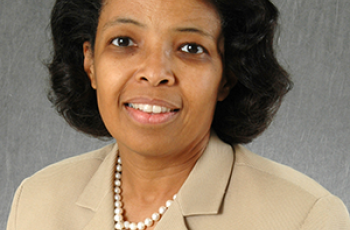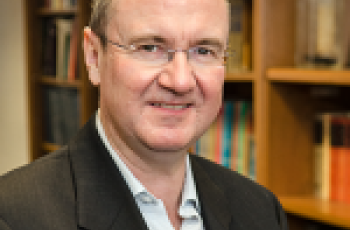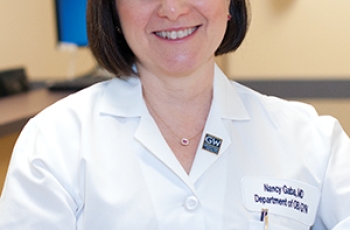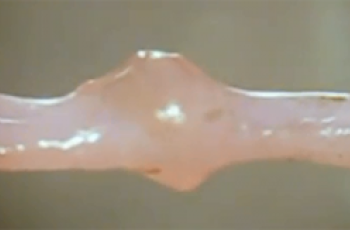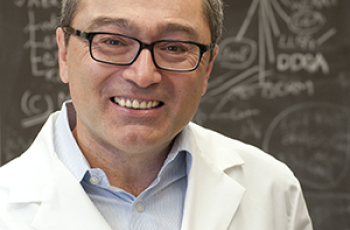Spring 2014 Issue
In his first six months as a clinical virologist at the University of Oxford, in 1988, Douglas F. Nixon, M.D., Ph.D., identified part of the Human Immunodeficiency Virus (HIV) that could stimulate a white blood cell.
Two GW School of Medicine and Health Sciences (SMHS) faculty members, Jacqueline S. Barnett, M.S., assistant professor of Physician Assistant studies, and Ellen F.
GW’s School of Medicine and Health Sciences (SMHS) announced several new appointments to key positions in the school this spring.
Despite a nationwide search, GW’s School of Medicine and Health Sciences (SMHS) leadership didn’t have to look very far to find the ideal successor to John Larsen, M.D., chair of the Department of Obstetrics and Gynecology (OBGYN), who stepped down after nearly four decades at GW.
In the interest of further advancing the George Washington University research mission, GW’s School of Medicine and Health Sciences (SMHS) has selected renowned neuroscientist and research administrator Robert H. Miller, Ph.D., to serve as the senior associate dean for research.
A novel idea from GW School of Medicine and Health Sciences (SMHS) researcher Narine Sarvazyan, Ph.D., could send relief to countless patients around the world suffering from chronic venous insufficiency — a disease in which patients experience sluggish venous blood flow from the legs back to the
Huda M. Ayas, Ed.D. ’06, M.B.A. ’98, M.H.S.A. ’93, founder and executive director of the Office of International Medicine Programs (IMP), was recently named associate dean for international medicine.
Prions — a blur of the words protein and infectious — are self-replicating clumps of proteins that can lead to a host of neurological disorders. The relationship between cholesterol metabolism and prion infection, however, also bears a striking resemblance to that of HIV and cholesterol.

